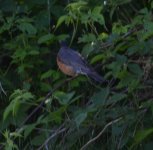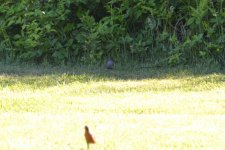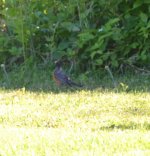Bird Brainer
Well-known member

Not sure what to make of this bird. It looks like an American Robin, but it much bigger! Middle image has a confirmed AMRO for size, and it seems so much bigger! And bluer! Many thanks again!!!!








